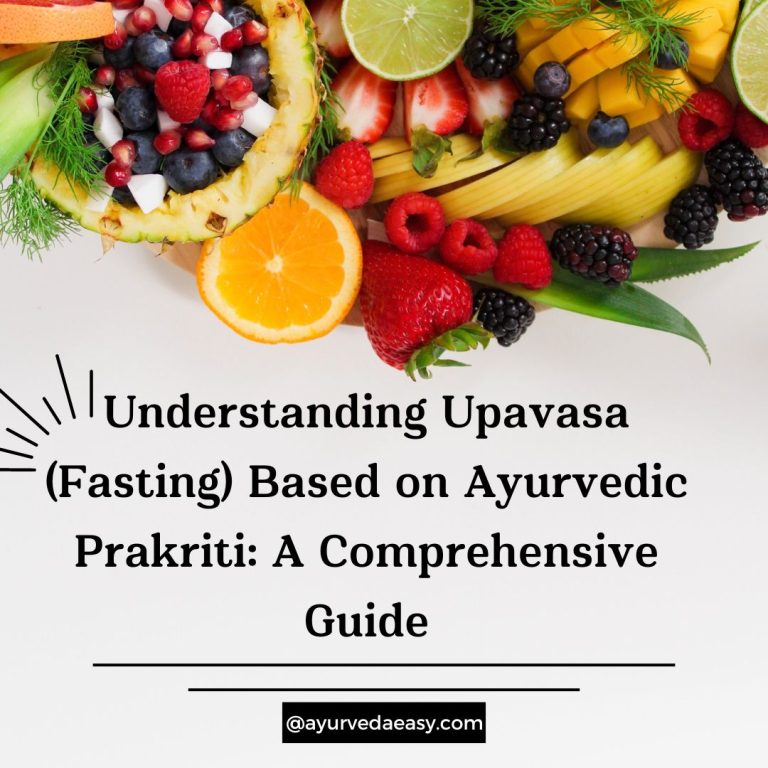Transformative Ayurvedic Yoga: Aligning Mind, Body, and Soul
Ayurveda, often referred to as the “Science of Life,” is an ancient holistic healing system that originated in India over 5,000 years ago. Rooted in the belief that health and wellness are intricately connected to the balance between mind, body, and spirit, Ayurveda offers a profound understanding of our individual constitution and the natural elements that surround us. In this transformative journey, we delve into the rich tapestry of Ayurveda and its intimate connection to the practice of yoga.
Table of Contents
ToggleEmbarking on the path of Ayurvedic Yoga is akin to setting forth on a pilgrimage of self-discovery, where the ancient wisdom of Ayurveda intertwines seamlessly with the transformative power of yoga. As we navigate through the principles and practices, a sacred space emerges—a space where the essence of Ayurveda and yoga converge to illuminate a pathway towards holistic well-being.
Understanding Ayurveda
At the heart of Ayurveda lies a profound recognition of the interconnectedness between the individual and the universe. The foundational principles of Ayurveda revolve around the concept of the five elements—earth, water, fire, air, and space—and their manifestation in the human body as three doshas: Vata, Pitta, and Kapha.
Exploring the Principles:
Ayurveda perceives health as a state of equilibrium, where each individual’s unique constitution, known as Prakriti, plays a pivotal role. It emphasizes the importance of understanding one’s Prakriti to maintain harmony and prevent imbalances that lead to ailments. Ayurveda encourages a lifestyle attuned to the cyclical rhythms of nature, promoting balance through diet, daily routines, and mindful practices.
The Three Doshas: Vata, Pitta, and Kapha:
Vata, associated with the elements of air and space, governs movement, creativity, and vitality. Pitta, aligned with fire and water, governs digestion, metabolism, and intellect. Kapha, rooted in earth and water, governs stability, strength, and emotional well-being. Each person possesses a unique blend of these doshas, influencing their physical, mental, and emotional characteristics.
Understanding the doshas is like deciphering the intricate language of the body’s energy. Vata, Pitta, and Kapha are not merely physiological components; they are the guiding forces that shape our individual nature. Imbalances in these doshas can lead to discomfort, disease, or emotional turbulence, making the knowledge of Ayurveda a compass to navigate back to equilibrium.
As we embark on this exploration, envision the doshas as the subtle brushstrokes on the canvas of your being, painting a portrait of your holistic health. Through the lens of Ayurveda, we begin to decipher the language of our body, recognizing the cues that guide us towards a life of balance and well-being. The journey of self-discovery unfolds as we navigate the intricate terrain of Ayurvedic principles, paving the way for a transformative fusion with the ancient art of yoga.
The Intersection of Ayurveda and Yoga
The synergy between Ayurveda and yoga is a profound dance of ancient wisdom and spiritual enlightenment. Ayurveda, with its focus on the balance of the doshas and holistic well-being, seamlessly intertwines with the transformative practice of yoga. Together, they form a harmonious union, guiding individuals on a journey towards a state of equilibrium in mind, body, and soul.
Complementary Dynamics:
Ayurveda and yoga share a common foundation rooted in the understanding of the human body’s subtle energies and the interconnectedness of all aspects of life. While Ayurveda provides a comprehensive framework for individual health and balance, yoga acts as a practical pathway to embody these principles. The dynamic movements of yoga postures (asanas), coupled with breath control (pranayama) and meditation, create a symphony that aligns with Ayurveda’s vision of holistic well-being.
Shared Goal of Balance:
The core philosophy uniting Ayurveda and yoga is the pursuit of balance. Both systems recognize that true health is not merely the absence of disease but a harmonious state where mind, body, and soul are in equilibrium. Ayurveda identifies imbalances in the doshas as the root cause of ailments, and yoga, with its diverse practices, serves as a means to restore that equilibrium. The shared goal is to foster a profound sense of balance that extends beyond the physical body, nurturing mental clarity, emotional resilience, and spiritual growth.
Ayurvedic Practices for Mind-Body Harmony
To cultivate holistic well-being, Ayurveda introduces a tapestry of lifestyle practices that harmonize the mind and body. These practices extend beyond the yoga mat, integrating seamlessly into daily routines, dietary choices, and self-care rituals.
Daily Routines:
Ayurveda advocates for the cultivation of daily routines, known as Dinacharya, to synchronize with the natural rhythms of the day. Starting with practices such as tongue scraping and oil pulling in the morning, Dinacharya aligns the body with the circadian rhythm. Regular exercise, preferably in the early morning, complements the rejuvenating effects of yoga, promoting vitality and mental clarity throughout the day. As the day unfolds, Ayurveda encourages mindful eating, adequate hydration, and moments of introspection to maintain balance.
Dietary Guidelines:
Central to Ayurvedic philosophy is the concept of Ahara, emphasizing that food is not only a source of nourishment but also a potent medicine. Ayurveda categorizes food based on its inherent qualities and the impact it has on the doshas. Individuals are advised to consume foods that balance their specific doshic constitution, creating a personalized approach to nutrition. This mindful approach to eating aligns with the intention of yoga, fostering a deep connection between the practitioner and the nourishment that sustains them.
Self-Care Rituals:
Ayurveda places a premium on self-care, recognizing its pivotal role in maintaining overall well-being. Abhyanga, or self-massage with warm oil, is a cherished Ayurvedic practice that nurtures the skin, soothes the nervous system, and fosters a sense of grounding. Incorporating mindfulness into daily activities, such as sipping herbal teas or taking moments for conscious breathing, further enhances the mind-body connection. These self-care rituals echo the essence of yoga, encouraging practitioners to treat themselves with kindness and compassion.
As we delve into these Ayurvedic practices, envision them as threads weaving a tapestry of well-being—a tapestry that extends far beyond the confines of a single yoga session. Through mindful daily routines, conscious dietary choices, and nurturing self-care, the transformative journey of Ayurvedic Yoga unfolds, inviting practitioners to embrace a holistic approach to health—one that transcends the physical and resonates with the rhythm of life itself.
The Essence of Transformative Yoga
In the realm of transformative yoga, the practice extends beyond the physical postures, or asanas, to embrace a holistic integration of mind, body, and spirit. Each yoga pose becomes a gateway to self-discovery, aligning seamlessly with the principles of Ayurveda to evoke a transformative journey towards balance and well-being.
Yoga Asanas Aligned with Ayurvedic Principles:
Ayurveda recognizes the uniqueness of each individual’s constitution, and similarly, yoga offers a vast array of asanas that can be tailored to suit different doshic imbalances. For Vata individuals, grounding poses such as Tadasana (Mountain Pose) provide stability and calm. Pitta individuals benefit from cooling postures like Padmasana (Lotus Pose) to pacify excess heat, while Kapha individuals find invigoration through dynamic poses like Virabhadrasana (Warrior Pose). The alignment of asanas with Ayurvedic principles transcends the physical, tapping into the subtle energies within, and guiding practitioners towards a harmonious state.
The Vital Role of Pranayama:
Central to Ayurvedic Yoga is the emphasis on breathwork, or Pranayama, as a key tool in balancing the doshas. Prana, the life force carried through the breath, is harnessed to restore equilibrium in the subtle energy channels of the body. Ujjayi breath, with its rhythmic sound, calms the nervous system and is particularly beneficial for Vata imbalance. Sheetali and Sheetkari pranayamas, involving cool inhalations, serve to pacify Pitta, while Kapalabhati, a forceful breath, helps invigorate Kapha energy.
The synchronicity between yoga asanas and Pranayama serves as a powerful catalyst for transformation. As practitioners move through the postures, guided by the rhythm of their breath, they tap into the wisdom embedded within Ayurveda. The breath becomes a bridge between the physical and subtle realms, inviting a deeper connection with the self.
Envision this transformative yoga practice as a dynamic dance—one where the body gracefully moves through asanas, guided by the breath’s rhythmic melody. The essence lies not just in the outward forms but in the inward journey, where the alchemy of Ayurveda and yoga transforms the practitioner, fostering a profound sense of balance in mind, body, and soul.
Nurturing the Soul Through Ayurvedic Wisdom
As we delve into the profound realms of Ayurvedic wisdom, the journey takes a soulful turn, inviting practitioners to explore meditation and mindfulness as integral components of Ayurvedic Yoga. This portion unfolds the tapestry of practices that nurture the soul, weaving together the threads of inner stillness and spiritual awakening.
Meditation and Mindfulness Practices:
In Ayurveda, the mind is considered a powerful force that influences the balance of doshas. Meditation, or Dhyana, becomes a sacred tool to quiet the fluctuations of the mind and cultivate inner serenity. Whether through mantra meditation, mindfulness, or loving-kindness practices, Ayurvedic meditation serves as a bridge between the physical and spiritual dimensions. It invites individuals to explore the vast landscapes of their consciousness, creating a sanctuary within where the doshas find equilibrium.
Mindfulness practices, such as mindful eating and conscious breathing, are seamlessly woven into the fabric of Ayurveda. The mindful approach extends beyond the yoga mat, permeating daily activities. As practitioners engage in present-moment awareness, they align with Ayurvedic principles, fostering a deep connection with the subtleties of life and the interplay of energies.
The Spiritual Aspect of Ayurveda and Yoga:
Beyond the physical and mental dimensions, Ayurveda and yoga share a profound spiritual essence. Ayurveda recognizes that true well-being encompasses not only the body but also the soul. Yoga, with its roots in spiritual traditions, provides a transformative journey towards self-realization. The practice becomes a sacred ritual, a communion with the divine within.
The intertwining of Ayurveda and yoga’s spiritual aspects invites practitioners to explore the essence of their existence. Through meditation, mantra chanting, and connecting with the divine energy within, individuals embark on a sacred pilgrimage—a journey that transcends the boundaries of the material world. Ayurvedic wisdom serves as a guiding light, illuminating the path towards self-discovery and spiritual awakening.
Conclusion
The transformative journey of Ayurvedic Yoga is an odyssey of self-discovery and holistic well-being. As we reflect on the key elements explored in this journey, the essence lies in the harmonious integration of Ayurveda and yoga, aligning mind, body, and soul.
The doshas, those subtle energies shaping our individual nature, become allies on this transformative path. Ayurvedic practices, both on and off the mat, guide us towards balance—be it through mindful daily routines, personalized dietary choices, or the dynamic dance of yoga asanas and breathwork.
Meditation and mindfulness unfold as gateways to the soul, offering moments of profound stillness and connection. The spiritual dimensions of Ayurveda and yoga beckon us to explore the sacred within, recognizing that well-being transcends the physical plane.
In conclusion, the invitation is extended to each reader: Embrace the wisdom of Ayurveda and weave it into your yoga practice. Let the principles of balance, mindfulness, and spirituality infuse every aspect of your life. As you embark on this transformative journey, may you find a sanctuary of well-being, where the alchemy of Ayurvedic Yoga transforms not only the body but the very essence of your being. Embrace this sacred fusion and nurture the harmonious dance of mind, body, and soul.





